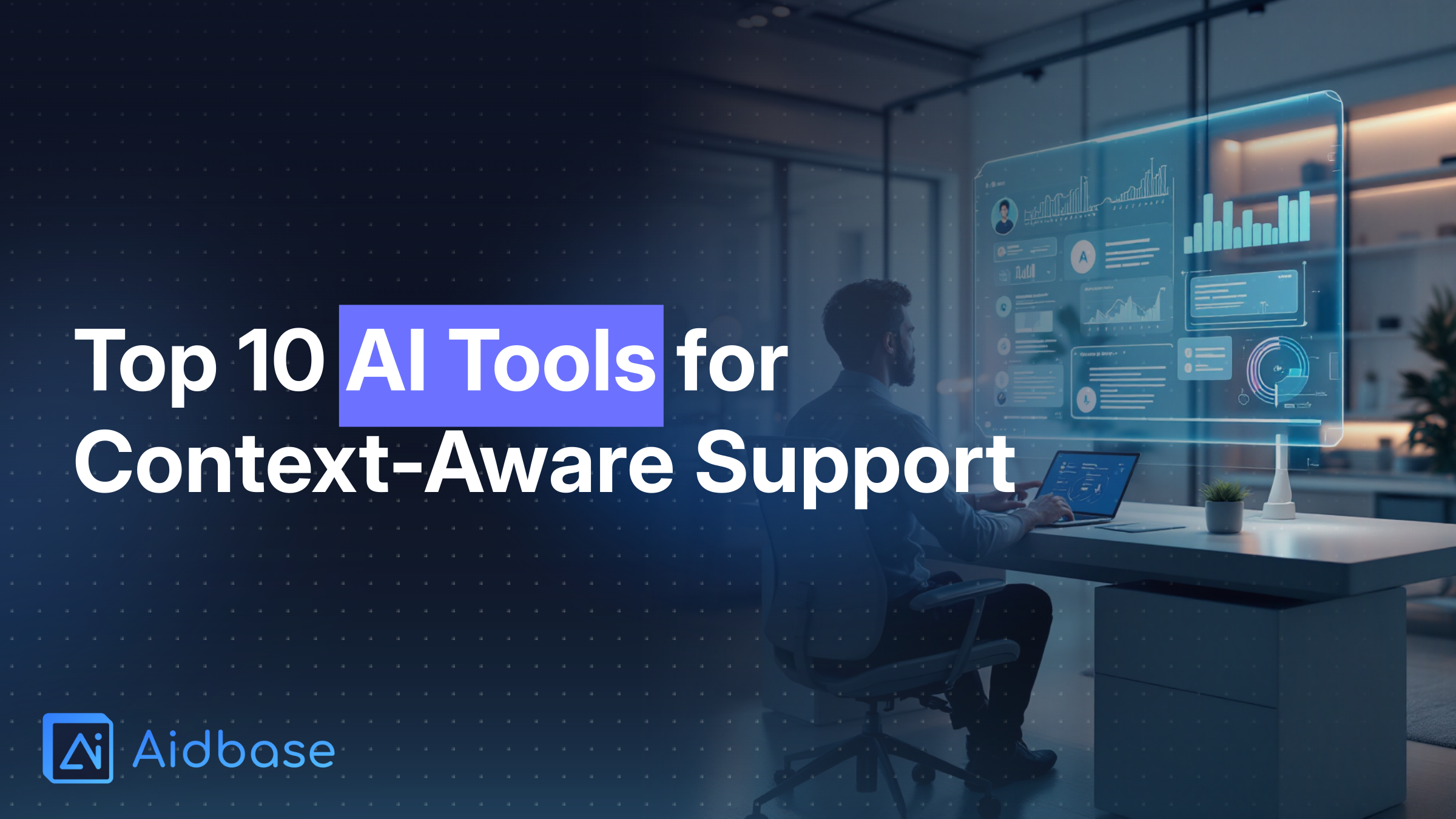In the rapidly changing digital landscape, customer support is evolving bey...

In today’s fast-evolving digital landscape, customer support is being completely redefined. Gone are the days of generic, one-size-fits-all responses. Instead, context-aware support systems are increasingly leveraging advanced AI tools to analyze customer data, history, sentiment, and usage patterns—thus providing customers with interactions that feel personalized and intuitive. In this post, we take an in-depth look at how these systems work and explore the top ten AI tools revolutionizing customer support in 2025.
Context-aware support systems are designed to understand the unique circumstances surrounding each customer interaction. By analyzing historical data, sentiment, user behavior, and even cross-platform signals, these systems seamlessly adapt to complex customer queries. Unlike traditional systems that rely on pre-scripted responses, context-aware systems harness real-time data to tailor responses, making the entire support experience more engaging and effective.
Key characteristics of these support systems include:
This shift towards contextual understanding has catalyzed the development of specialized AI tools that drive operational efficiency and boost customer satisfaction.
In customer support, understanding context is crucial. Customers often express frustrations, needs, and inquiries that are influenced by their past interactions, current behavior, or even external events. By incorporating context into the support process, companies can:
For instance, platforms like the Zendesk Resolution Platform, introduced in 2025, have showcased how flexible, AI-driven tools can adapt to various situations with context-powered resolutions. Acclaimed sources like TechRadar have highlighted Zendesk’s innovative approach, underscoring the importance of context in solving customer problems effectively (TechRadar).
AI tools are fundamentally transforming customer support by:
Innovative tools like NICE CXone Mpower and Gupshup Auto Bot Builder have integrated robust AI-driven analysis, which not only streamlines operations but also tailors the conversation flow according to the customer's context. These capabilities are setting new benchmarks in the support industry.
Moreover, with the help of tools like Aidbase, businesses can now dynamically adapt support flows based on individual customer data, a strategy that modern enterprises are swiftly adopting to differentiate themselves in crowded marketplaces.
Selecting the top AI tools for context-aware support systems involved a comprehensive evaluation process. Our methodology considered several key factors:
Each tool was weighed based on real-world performance metrics, expert reviews, and effectiveness in handling complex support scenarios. This rigorous process ensured that our ranking reflects current industry standards and future trends.
Aidbase stands out as a leader in adapting support flows to individual customer needs. This tool blends state-of-the-art AI algorithms with robust data analytics to:
By leveraging contextual data, Aidbase empowers support teams to provide proactive solutions, reducing resolution times and increasing overall satisfaction. Its integration of AI with flexible support design makes it an indispensable tool for modern support teams (Aidbase).
User sentiment is a priceless indicator of customer mood and intent. With advanced sentiment analysis capabilities, this tool:
By offering insights into user emotion, this tool enables support agents to pivot quickly from scripted responses to more empathetic, tailored communications.
Historical context provides invaluable background that informs every interaction. This tool specializes in mining historical data to:
With this tool, support teams can resolve issues faster by drawing upon a rich trove of past data, leading to more informed and contextually relevant support interactions.
Personalization lies at the heart of exceptional customer support. This AI-driven tool harnesses powerful personalization algorithms to:
The algorithms are designed to evolve continuously, ensuring that the support system becomes more refined and contextually aware over time.
In a rapid-feedback environment, integrating customer feedback loops is vital. This tool focuses on:
By making feedback an integral part of the system, this tool helps create a constantly evolving support process that adapts to user needs.
Preventing issues before they escalate is the holy grail of customer support. This AI tool excels in:
Its proactive nature minimizes customer dissatisfaction and prevents minor issues from ballooning into larger problems.
Real-time data is at the core of any context-aware support system. This tool:
By continuously updating its knowledge base in real time, the tool ensures that every interaction is relevant, timely, and precise.
Customer interactions now span multiple platforms. This tool is engineered to:
Such cross-platform harmony is critical as digital interactions become increasingly diverse, ensuring that every customer receives the same high-quality support experience.
A user interface that adapts to customer context not only improves interaction but also boosts overall efficiency. This tool offers:
These enhancements not only support users better but also contribute to reduced frustration and improved response times.
Looking ahead, the future of context-aware support is incredibly promising. This innovative tool is pushing the envelope by:
This tool represents the cutting edge of customer support, anticipating trends and ensuring that companies remain ahead of the curve in delivering personalized support experiences.
The evolution of customer support is unmistakably linked to advancements in AI and context-aware capabilities. By moving beyond generic responses and embracing tools that integrate historical data, real-time feedback, and personalized insights, companies can drastically improve customer satisfaction and operational efficiency. As we’ve explored, the top AI tools—from Aidbase and its dynamic support adaptations to cutting-edge solutions in sentiment analysis and proactive support—are setting new industry standards for context-aware customer engagement. The future is bright for AI-powered support, and staying attuned to these innovations will ensure you remain at the forefront of superior customer service.